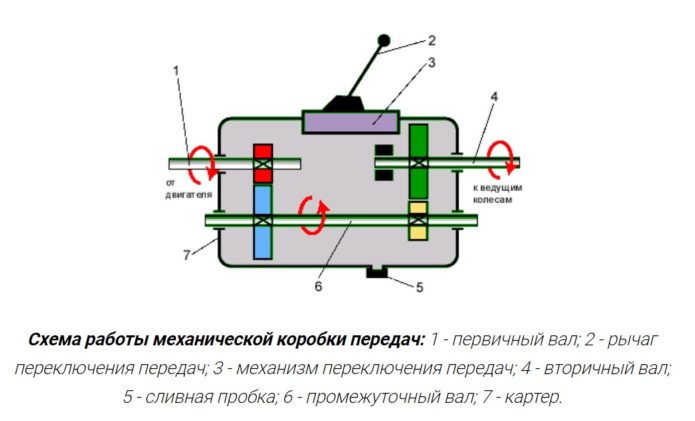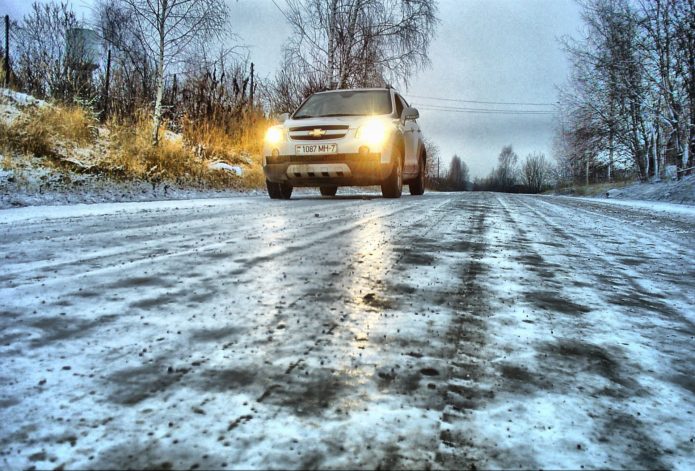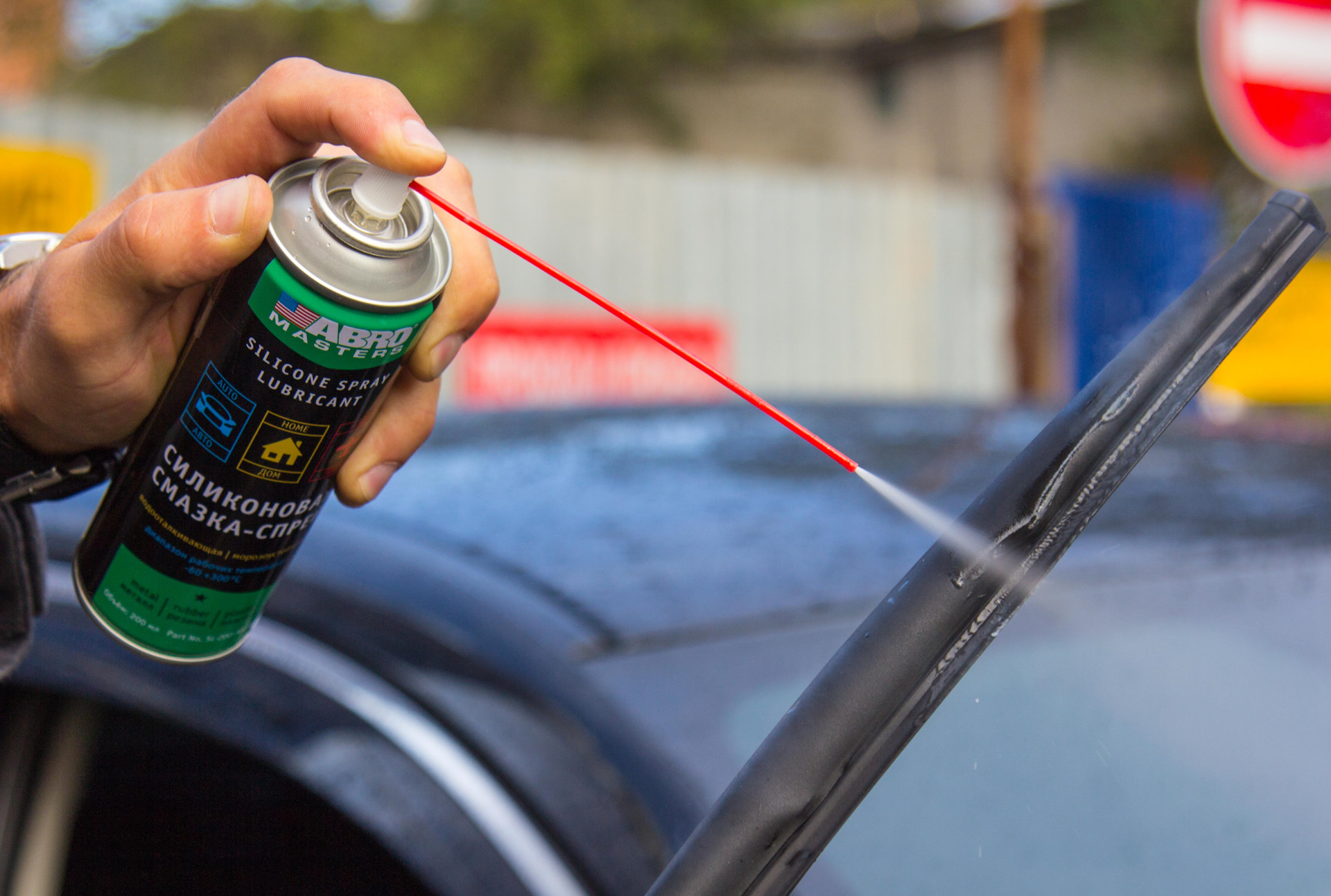
How to shift gears on a manual transmission
Content
The number of cars with a manual transmission is decreasing every year, giving way to vehicles with automatic, robotic and CVT units. Many car owners, considering themselves experienced and skilled drivers, do not know how to properly shift gears on the “mechanics”, because they have never dealt with it. Nevertheless, true connoisseurs prefer to use a manual transmission, arguing that it is much more dynamic, provides more opportunities and can, with proper operation, last much longer than an automatic transmission. No wonder all sports cars are equipped with a manual transmission. In addition, the need to independently make decisions about the transition from one gear to another develops the driver's "feeling of the car", the habit of constantly monitoring the engine's operating mode. The reliability and high maintainability of the “mechanics” are highly valued by users and ensure the demand for cars equipped with this type of transmission. Inexperienced drivers will benefit from some understanding of the principles of driving a car with a manual transmission, since such knowledge is never superfluous.
Content
- 1 The principle of operation of the manual transmission
- 2 When to shift gears
- 3 How to shift gears correctly
- 4 Overtaking switch
- 5 How to brake with the engine
The principle of operation of the manual transmission
The crankshaft speed of most internal combustion engines is in the range of 800-8000 rpm, and the speed of rotation of the wheels of the car is 50-2500 rpm. Operation of the engine at low speeds does not allow the oil pump to create normal pressure, as a result of which an “oil starvation” mode occurs, which contributes to the rapid wear of moving parts. There is a significant difference between the modes of rotation of the crankshaft of the engine and the wheels of the car.
This discrepancy cannot be corrected by simple methods, since different power modes are required for different situations. For example, at the beginning of the movement, more power is needed to overcome the inertia of rest, and much less effort is required to maintain the speed of an already accelerated car. In this case, the lower the speed of rotation of the crankshaft of the engine, the lower its power. The gearbox serves to convert the torque received from the crankshaft of the engine into the power mode necessary for this situation and transfer it to the wheels.

The crankcase is more than half filled with oil to lubricate the gears involved in the work
The principle of operation of a mechanical gearbox is based on the use of pairs of gears with a certain gear ratio (the ratio of the number of teeth on two interacting gears). Slightly simplified, a gear of one size is mounted on the motor shaft, and another on the gearbox shaft. There are different types of mechanical boxes, the main of which are:
- Two-shaft. Used on front wheel drive vehicles.
- Three-shaft. Installed on rear wheel drive vehicles.
The design of the boxes consists of a working and a driven shaft, on which gears of a certain diameter are installed. By switching different pairs of gears, the corresponding power and speed modes are achieved. There are boxes with 4,5, 6 or more pairs or steps as they are called. Most cars have a five-speed gearbox, but other options are not uncommon. The first stage has the largest gear ratio, provides maximum power at minimum speed and is used to start the car from a standstill. The second gear has a smaller gear ratio, which allows you to increase speed, but gives less power, etc. Fifth gear allows you to achieve maximum speed on a pre-overclocked car.
Gear shifting is performed when the connection to the engine crankshaft (clutch) is disconnected. It is noteworthy that the manual transmission has the ability to go from first gear immediately to fifth. Usually, the transition from high to low gears occurs without significant problems, while when switching from first to fourth immediately, the engine most likely does not have enough power and it stalls. This requires the driver to understand the principle of gear shifting.
When to shift gears
In any case, the movement of the car begins when you turn on the first gear, or speed, as it is called in everyday life. Then the second, third, etc. are switched on in turn. There are no fundamental requirements for the gear shift sequence, the decisive factors are the speed and driving conditions. There is a textbook scheme in order to figure out at what speed to shift gears:

First gear is used to start off, second allows you to pick up speed, third is needed for overtaking, fourth for driving around the city, and fifth for driving outside of it.
It must be borne in mind that it is an average and already fairly outdated scheme. Some experts argue that it should not be used while driving, it is harmful to the power unit of the machine. The reason lies in the fact that the technical characteristics of cars change every year, technology improves and gets new opportunities. Therefore, most drivers try to be guided by the tachometer readings, accelerating the engine to 2800-3200 rpm before upshifting.
It is difficult to constantly check the readings of the tachometer while driving, and not all cars have it. Experienced drivers are guided by their own instincts, controlling the sound of a running engine and its vibration. After some time of using manual transmission, a certain experience appears, which manifests itself at the level of a reflex. The driver switches to another speed without hesitation.
How to shift gears correctly
The principle of switching speeds common to all types of manual transmissions is as follows:
- The clutch is fully depressed. The movement is sharp, you should not hesitate.
- The desired transmission is switched on. You need to act slowly, but quickly. The lever is sequentially moved to the neutral position, then the desired speed is turned on.
- The clutch pedal is smoothly released until contact is made, at the same time the gas is slightly added. This is necessary to compensate for the loss of speed.
- The clutch is released completely, the gas is added until the desired driving mode appears.
Most manual transmissions have the ability to shift gears without using the clutch pedal. This only works while driving, it is mandatory to use the clutch pedal to start from a place. To shift, release the gas pedal and move the gearshift lever to the neutral position. The transmission will turn itself off. Then the lever is moved to the desired position corresponding to the gear you want to turn on. If the lever is normally in place, it remains to wait a few seconds until the engine speed reaches the desired value so that the synchronizer does not prevent it from turning on. Downshifts are engaged in the same way, but it is advisable to wait until the engine speed drops to the appropriate value.
It must be borne in mind that not all types of manual transmissions have the ability to shift without a clutch. In addition, if the shifting is not performed correctly, the result is a loud crunch of the gear teeth, indicating unacceptable actions. In this case, you should not try to turn on the gear, you must set the lever to neutral, depress the clutch pedal and turn on the speed in the normal way.
For such a switch, you need the skill of driving a car with a manual transmission; it is not recommended for beginners to use this technique right away. The benefit of having such a skill is that if the clutch fails, the driver can get to the service station under his own power without calling a tow truck or tow truck.

As a rule, gears higher than the fourth are used to reduce fuel consumption, but you should not shift to a higher gear ahead of time
For novice drivers, it is important to carefully study the lever position diagram in order to avoid mistakes and engage exactly the right gear. It is especially important to remember the position of the reverse speed, since it has its own location on different boxes.
It is recommended to practice in the inclusion of different gears so that there are no hitches while driving. Because of them, the speed drops and you have to load the engine in order to accelerate the car again.
The main task that occurs when shifting gears is smoothness, the absence of jerks or jerks of the car. This causes discomfort for passengers, contributes to early wear of the transmission. The reasons for jerks are:
- Gear disengagement is out of sync with pressing the clutch pedal.
- Too fast gas supply after switching on.
- Inconsistency of operations with the clutch and gas pedals.
- Excessive pause when switching.
A typical mistake of beginners is poor coordination of actions, discrepancy between the work of the clutch pedal and the gear lever. This is usually indicated by a crunch in the box or jerks of the car. All movements should be worked out to automatism so as not to disable the clutch or other transmission elements. In addition, inexperienced drivers are often late with the inclusion of second gear or are generally poorly oriented in choosing the right speed. It is recommended to focus on the sound of the engine, which is best able to signal overload or insufficient acceleration. This contributes to fuel economy, since a timely shift to a higher gear allows you to reduce engine speed, and, accordingly, fuel consumption.
Always check that the shift lever is in neutral before starting the engine. If any gear is engaged, the vehicle will jerk forward or backward when starting, which may cause an accident or an accident.
Overtaking switch
Overtaking is a responsible and rather risky operation. The main danger that can occur when overtaking is a loss of speed, which increases the time it takes to complete the maneuver. While driving, situations constantly arise when seconds decide everything, and it is unacceptable to allow delay when overtaking. The need to maintain and increase speed is the cause of frequent mistakes by inexperienced drivers - they shift to a higher gear, expecting that the driving mode will intensify. In fact, the opposite happens - the car, when switching, loses speed and picks it up again for a while.

When overtaking, it is recommended to shift down one gear and only then complete the maneuver
Most drivers say that the best option is to overtake at 3 speeds. If the car is moving to 4 at the time of overtaking, it is advisable to switch to 3. This contributes to the emergence of more power, acceleration of the car, which is very important when overtaking. Alternatively, when driving in 5th gear, before starting the maneuver, shift to 4th, overtake and re-shift to 5th gear. An important point is to achieve the optimum engine speed for the next speed. For example, if 4th gear requires 2600 rpm, and the car moves at 5 speeds from 2200 rpm, then you must first accelerate the engine to 2600 and only then switch. Then there will be no unnecessary jerks, the car will move smoothly and with the necessary power reserve for acceleration.
How to brake with the engine
The brake system of the car is used when the clutch is disengaged and acts directly on the wheels. It allows you to effectively and quickly stop the vehicle, but requires careful and meaningful use. Locked wheels or a sudden transfer of the weight of the machine to the front axle due to emergency braking can cause an uncontrolled skid. This is especially dangerous on wet or icy road surfaces.
Engine braking is considered one of the mandatory skills that all drivers should have. A feature of this method is to reduce the speed of the machine without using the brake system. Slowing down is achieved by releasing the gas pedal with the clutch engaged, as a result of which the engine crankshaft speed drops, the power unit ceases to give energy to the transmission, but, on the contrary, receives it. The energy reserve due to the moment of inertia is relatively small, and the car quickly decelerates.
The greatest efficiency of this method is observed in low gears - first and second. In higher gears, engine braking should be used more carefully, since the inertia of movement is large and can cause feedback - increased loads on the crankshaft and all transmission elements as a whole. In such situations, it is recommended to help the main brake system or the parking brake (so-called combined braking), but use them carefully, in moderation.

When driving on an icy road, use engine braking to avoid skidding.
Recommended situations for engine braking:
- Long slopes, descents, where there is a risk of overheating of the brake pads and their failure.
- Ice, icy or wet road surfaces, where the use of the service brake system causes the wheels to lock up, the machine goes skidding and completely loses control.
- Situations when you need to calmly slow down before a pedestrian crossing, traffic lights, etc.
It should be borne in mind that the attitude of drivers to engine braking is ambiguous. Some argue that this technique allows you to save fuel, increase the life of brake pads, and improve driving safety. Others believe that engine braking places undesirable stress on the transmission components, which contributes to early failure. To a certain extent, both are right. But there is a situation in which engine braking is the only available means - a complete failure of the vehicle's braking system.
Engine braking requires caution. The problem is that the speed reduction is not displayed in any way, the brake lights do not light up. Other participants in the movement can only assess the situation after the fact, not being able to get the usual light information. This must be remembered and taken into account when braking. It is recommended to develop the skills of such a deceleration, to practice in a safe place.
The use of a manual transmission becomes the lot of connoisseurs, people who have a clear idea of \uXNUMXb\uXNUMXbthe device and the operating features of this unit. It is difficult for a person who is used to driving a car with an automatic transmission to get used to constantly controlling speed and power modes, although the automaticity of actions is developed quite quickly. Drivers with experience driving both types of cars note a greater number of "mechanics" possibilities. However, for confident and free use of manual transmission, a certain experience and understanding of its design features are required, which come only with practice.
